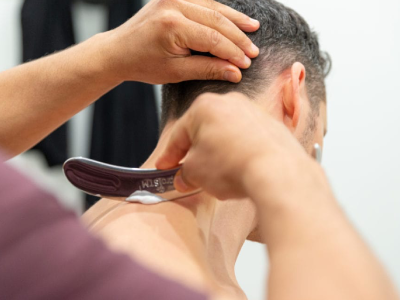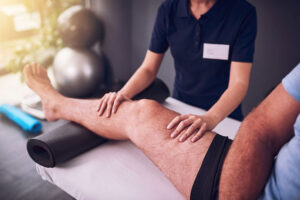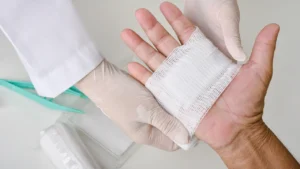If you’re struggling with pain, muscle stiffness, or recovering from an injury, you may have heard of Instrument Assisted Soft Tissue Mobilization (IASTM). This innovative therapy is designed to treat soft tissue injuries, break down adhesions, and improve the overall function of muscles and joints. Whether you’re an athlete looking to recover from a strain or someone dealing with chronic pain, IASTM can help you get back to optimal health. In this post, we’ll explore what IASTM is, its benefits, how it works, and how it can support your recovery journey.
What is Instrument Assisted Soft Tissue Mobilization (IASTM)?
Instrument Assisted Soft Tissue Mobilization (IASTM) is a hands-on therapeutic technique that uses specialized tools to target soft tissue dysfunctions. The primary goal of IASTM is to break down scar tissue, adhesions, and fibrosis that can result from injury, overuse, surgery, or other factors. The instruments used in IASTM are ergonomically designed, making it easier for the therapist to locate and treat specific problem areas with precision.
The instruments allow for a deeper and more effective treatment, helping to mobilize the tissues and stimulate the healing process.
Benefits of Instrument Assisted Soft Tissue Mobilization (IASTM)
The benefits of IASTM are profound and wide-ranging. Here are some of the most notable effects:
- Pain Reduction – IASTM helps break up adhesions and scar tissue, leading to pain reduction in affected areas. It promotes blood circulation and stimulates the body’s natural healing processes.
- Improved Range of Motion – By mobilizing the soft tissue, IASTM increases flexibility and helps restore the range of motion in stiff or injured areas.
- Faster Recovery – Whether you’ve recently undergone surgery or are recovering from an injury, IASTM can speed up the rehabilitation process by promoting faster tissue repair and reducing inflammation.
- Restoring Strength and Function – As IASTM helps improve mobility and decreases pain, it supports the restoration of strength and overall performance, making it an excellent therapy for athletes.
How Does IASTM Work?
Instrument Assisted Soft Tissue Mobilization works by targeting areas of soft tissue that are restricted due to scar tissue, adhesions, or fibrosis. When the therapist uses the instrument on the affected area, microtrauma is induced into the tissue. This causes a local inflammatory response that stimulates the healing process.
The process triggers the reabsorption of inappropriate fibrosis (scar tissue) and stimulates collagen production. Over time, this encourages the remodeling of the affected soft tissue, leading to improved tissue quality, reduced pain, and enhanced function.
Conditions Treated with Instrument Assisted Soft Tissue Mobilization
IASTM is versatile and can be used to treat a variety of conditions affecting both the upper and lower extremities. Some of the most common conditions treated with IASTM include:
- Soft Tissue Injuries – IASTM is effective in treating strains, sprains, and muscle injuries.
- Trauma and Overuse Conditions – Whether it’s from an accident or repetitive movement, IASTM can reduce scar tissue and improve mobility.
- Post-Surgery Rehabilitation – After surgery, IASTM helps to break down scar tissue and promote faster recovery.
- Repetitive Strain Injuries (RSI) – Conditions like carpal tunnel syndrome, tennis elbow, and golfer’s elbow can benefit greatly from IASTM therapy.
Is Instrument Assisted Soft Tissue Mobilization Right for You?
Instrument Assisted Soft Tissue Mobilization is suitable for many individuals, especially those dealing with chronic pain, restricted movement, or recovering from injuries. Here’s a look at who can benefit from IASTM:
- Athletes – IASTM helps athletes recover from injuries, improve mobility, and maintain peak performance.
- Office Workers – Prolonged sitting and poor posture can lead to soft tissue restrictions. IASTM can help alleviate pain and restore movement.
- Post-Surgery Patients – After surgery, IASTM can reduce scarring, improve flexibility, and promote faster healing.
- Anyone with Chronic Pain or Limited Mobility – If you suffer from stiffness, muscle tightness, or general discomfort, IASTM may be the answer.
During an IASTM session, you’ll experience a combination of gentle pressure and scraping motion applied to the targeted areas. The treatment is typically well-tolerated, although some individuals may feel mild discomfort as the adhesions and scar tissue are broken down.
IASTM vs. Other Soft Tissue Treatments
When comparing Instrument Assisted Soft Tissue Mobilization (IASTM) to traditional therapies, it offers a more targeted approach. Here’s how IASTM compares:
- IASTM vs. Massage – While both therapies aim to improve mobility and reduce muscle tension, IASTM can break down deeper adhesions and scar tissue, making it more effective for chronic issues or post-injury rehabilitation.
- IASTM vs. Physical Therapy – IASTM complements physical therapy by addressing soft tissue restrictions directly, whereas traditional physical therapy focuses more on strengthening and flexibility exercises.
- IASTM vs. Deep Tissue Therapy – IASTM uses specific instruments to target tissues with precision, whereas deep tissue therapy relies solely on manual pressure. IASTM is often more effective for breaking down scar tissue.
Takeaway
Instrument Assisted Soft Tissue Mobilization is a powerful and effective therapy for those looking to improve mobility, reduce pain, and recover from injuries. Whether you’re an athlete, recovering from surgery, or just dealing with chronic discomfort, IASTM can help you achieve your goals faster and more efficiently.
If you think IASTM might be right for you, reach out to a certified therapist for a consultation. They can assess your condition and guide you through the treatment process.






